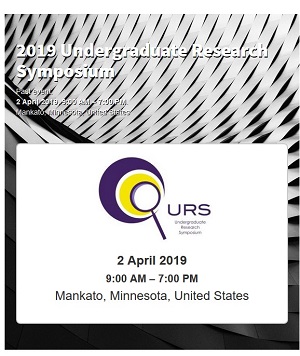Defining "Above-And-Beyond" School Behavior
Location
CSU Ballroom
Start Date
2-4-2019 2:00 PM
End Date
2-4-2019 3:30 PM
Student's Major
Psychology
Student's College
Social and Behavioral Sciences
Mentor's Name
Kevin Filter
Mentor's Department
Psychology
Mentor's College
Social and Behavioral Sciences
Description
Defining “Above and Beyond” behaviors is important because teachers need to distinguish between behaviors that are expected of students and behaviors that should be praised or rewarded. Having a clear definition of what behaviors should be considered “above and beyond” would help professionals conduct school-wide behavior programs focusing on improving student behavior. Through our current research, we hope to identify what behaviors school personal would categorize as “above and beyond” to help define this type of behavior. People attending the PBIS conference on November 7th-9th of 2018, were asked to fill out our survey. Participants in our study included 164 teachers, administrators, and other school personnel from different areas in Minnesota. The participants completed a survey consisting of three different sections. One section asked participants to list behaviors that they would consider “meeting expectation” in different school settings (e.g., the classroom, the hallway, the lunchroom). The second asked participants to do the same with “above and beyond” behaviors in the same school settings. The final section had a series of forced choice questions, asking the participant to decide whether a behavior is “meeting expectation” or going “above and beyond”. We anticipate our results to show which behaviors participants would consider “above and beyond” behavior and which behaviors they would consider “meeting expectation” based on three parameters: self vs. others, prompted vs. unprompted, and active vs. passive. We predict that participants will choose more “above and beyond” behaviors that involve helping others, are unprompted, and are active behaviors.
Defining "Above-And-Beyond" School Behavior
CSU Ballroom
Defining “Above and Beyond” behaviors is important because teachers need to distinguish between behaviors that are expected of students and behaviors that should be praised or rewarded. Having a clear definition of what behaviors should be considered “above and beyond” would help professionals conduct school-wide behavior programs focusing on improving student behavior. Through our current research, we hope to identify what behaviors school personal would categorize as “above and beyond” to help define this type of behavior. People attending the PBIS conference on November 7th-9th of 2018, were asked to fill out our survey. Participants in our study included 164 teachers, administrators, and other school personnel from different areas in Minnesota. The participants completed a survey consisting of three different sections. One section asked participants to list behaviors that they would consider “meeting expectation” in different school settings (e.g., the classroom, the hallway, the lunchroom). The second asked participants to do the same with “above and beyond” behaviors in the same school settings. The final section had a series of forced choice questions, asking the participant to decide whether a behavior is “meeting expectation” or going “above and beyond”. We anticipate our results to show which behaviors participants would consider “above and beyond” behavior and which behaviors they would consider “meeting expectation” based on three parameters: self vs. others, prompted vs. unprompted, and active vs. passive. We predict that participants will choose more “above and beyond” behaviors that involve helping others, are unprompted, and are active behaviors.
Recommended Citation
Knapper, Sidney and Breana Stang. "Defining "Above-And-Beyond" School Behavior." Undergraduate Research Symposium, Mankato, MN, April 2, 2019.
https://cornerstone.lib.mnsu.edu/urs/2019/poster-session-B/11



